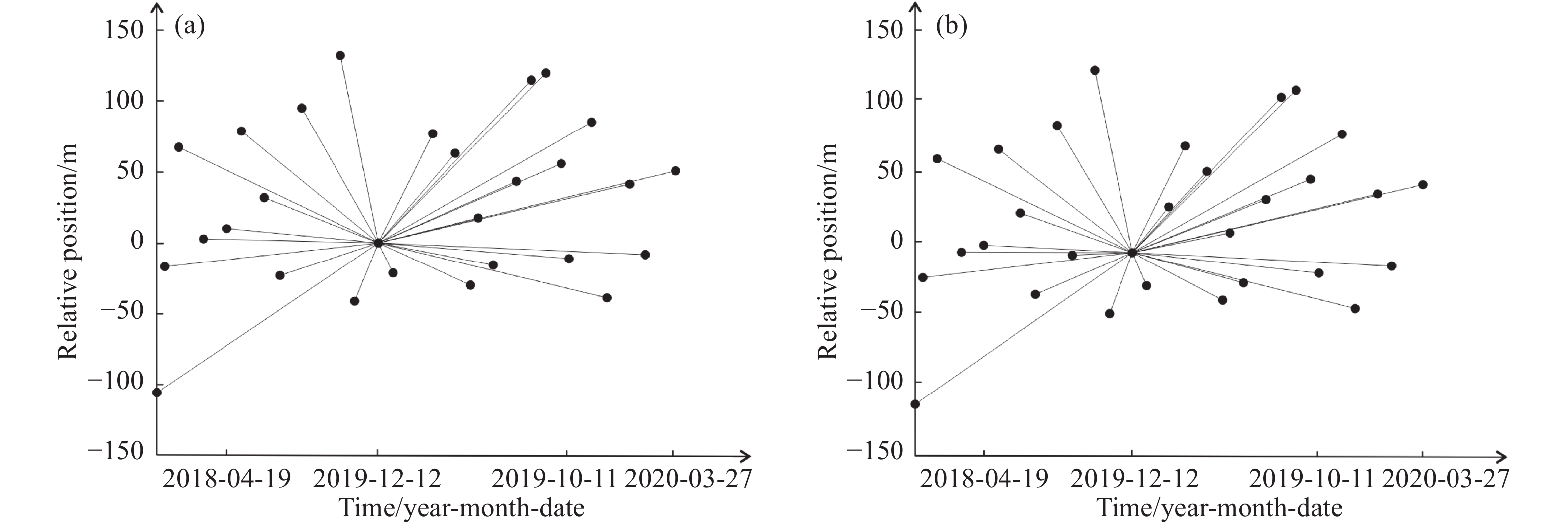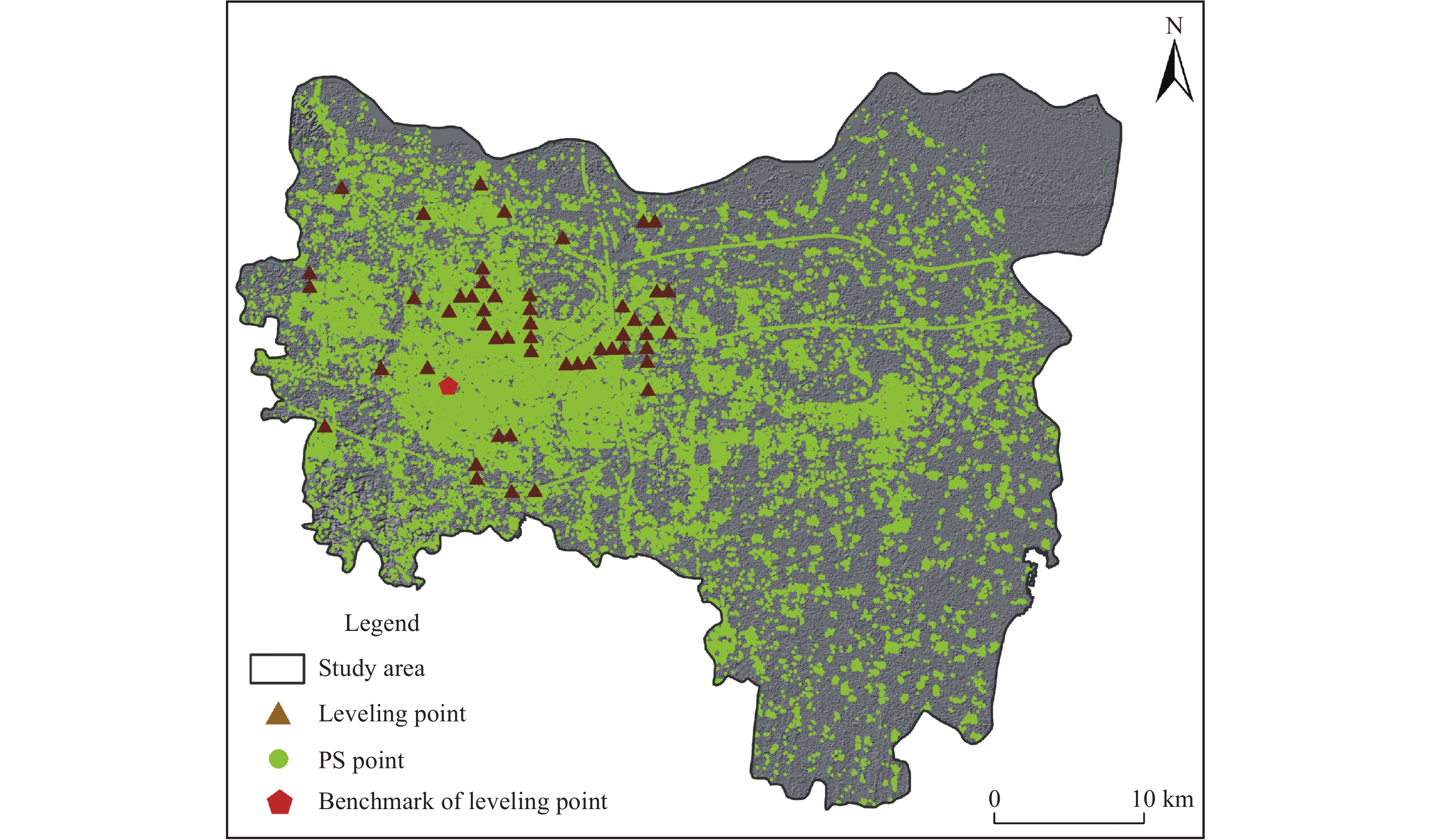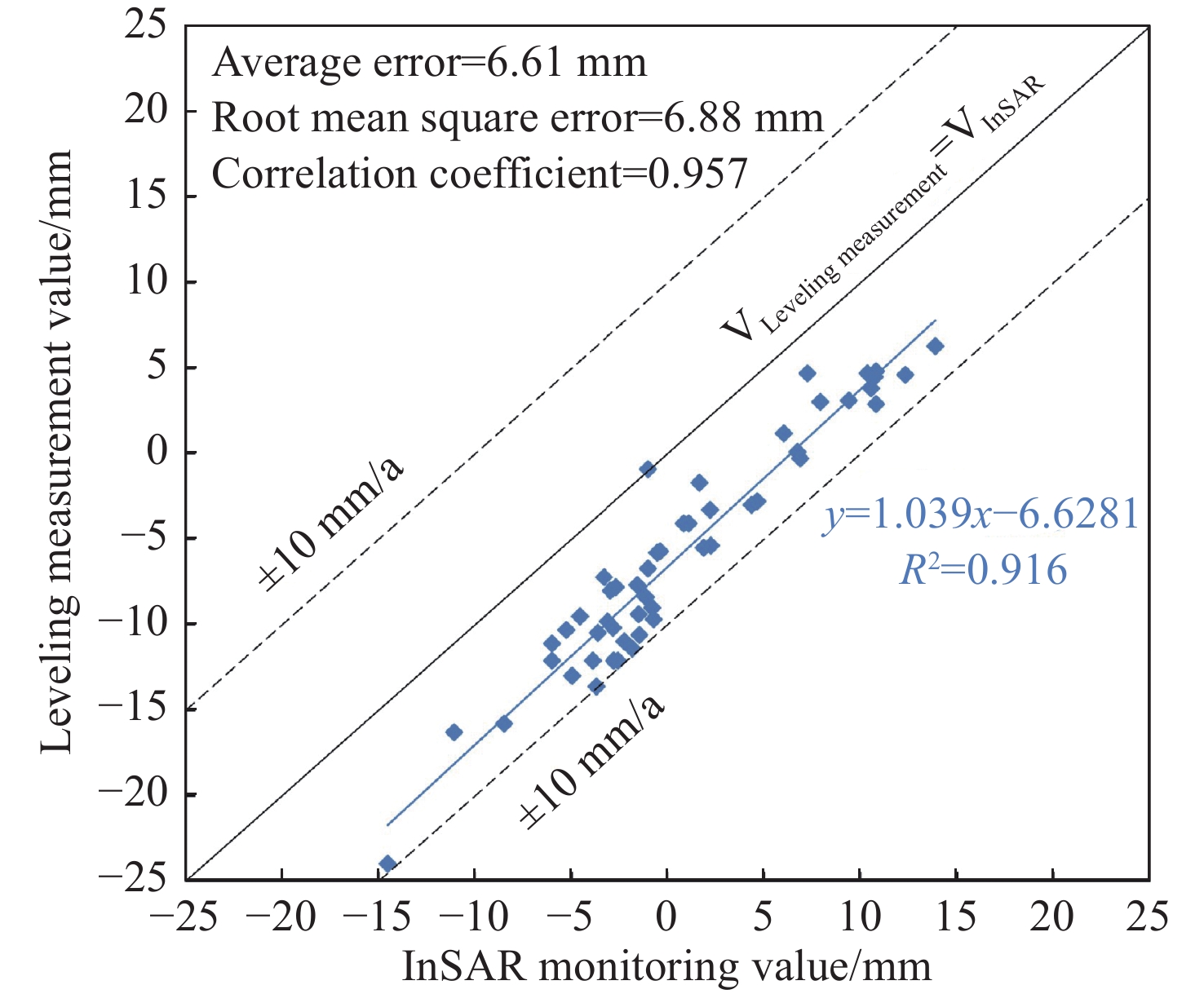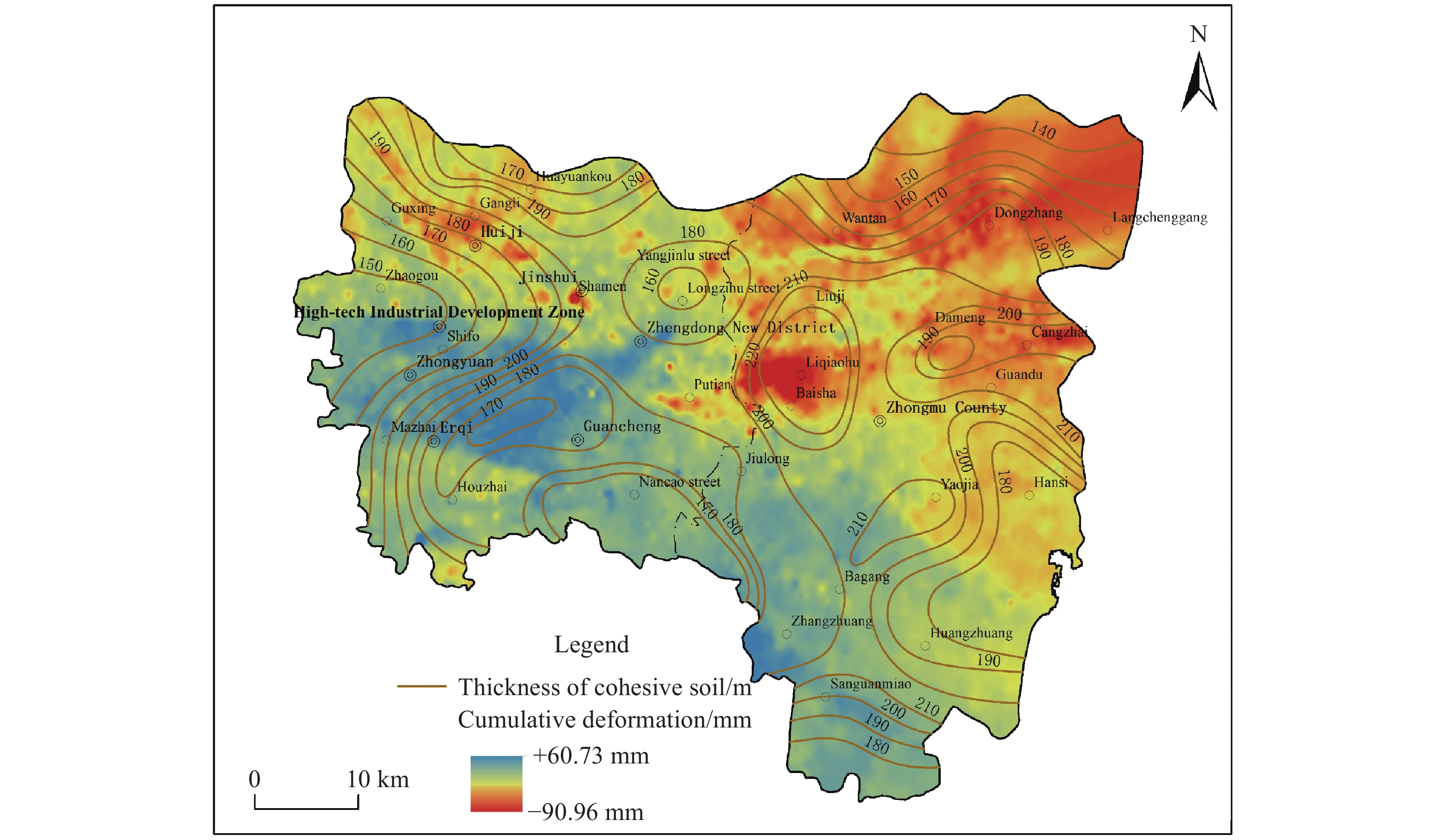| Citation: | Zhuo Zi-jun, Lv Dun-yu, Meng Shu-ran, Zhang Jian-yu, Liu Song-bo, Wang Cui-ling. 2023. Factors driving surface deformations in plain area of eastern Zhengzhou City, China. Journal of Groundwater Science and Engineering, 11(4): 347-364. doi: 10.26599/JGSE.2023.9280028 |
Factors driving surface deformations in plain area of eastern Zhengzhou City, China
-
Abstract
With the rapid socio-economic development and urban expansion, land subsidence has emerged as a major environmental issue, impeding the high-quality development of the plain area in eastern Zhengzhou City, Henan Province, China. However, effective prevention and control of land subsidence in this region have been challenging due to the lack of comprehensive surface deformations monitoring and the quantitative analysis of the factors driving these deformations. In order to accurately identify the dominant factor driving surface deformations in the study area, this study utilized the Persistent Scattered Interferometric Synthetic Aperture Radar (PS-InSAR) technique to acquire the spatio-temporal distribution of surface deformations from January 2018 to March 2020. The acquired data was verified using leveling data. Subsequently, GIS spatial analysis was employed to investigate the responses of surface deformations to the driving factors. The findings are as follows: Finally, the geographical detector model was utilized to quantify the contributions of the driving factors and reveal the mechanisms of their interactions. The findings are as follows: (1) Surface deformations in the study area are dominated by land subsidence, concentrated mainly in Zhongmu County, with a deformation rate of −12.5–−37.1 mm/a. In contrast, areas experiencing surface uplift are primarily located downtown, with deformation rates ranging from 0 mm to 8 mm; (2) Groundwater level, lithology, and urban construction exhibit strong spatial correlations with cumulative deformation amplitude; (3) Groundwater level of the second aquifer group is the primary driver of spatially stratified heterogeneity in surface deformations, with a contributive degree of 0.5328. The contributive degrees of driving factors are significantly enhanced through interactions. Groundwater level and the cohesive soil thickness in the second aquifer group show the strongest interactions in the study area. Their total contributive degree increases to 0.5722 after interactions, establishing them as the primary factors influencing surface deformation patterns in the study area. The results of this study can provide a theoretical basis and scientific support for precise prevention and control measures against land subsidence in the study area, as well as contributing to research on the underlying mechanisms.
-

-
References
Chen BB, Gong LH, Chen Y, et al. 2020. Land subsidence and its relation with groundwater aquifers in Beijing Plain of China. The Science of the Total Environment, 735: 139111. DOI:10.1016/j.scitotenv.2020.139111. Chen M, Tomas R, Li ZH, et al. 2016. Imaging land subsidence induced by groundwater extraction in Beijing (China) using satellite radar interferometry. Remote Sensing, 8(6): 468. DOI:10.3390/rs8060468. Cheng R, Zhu L, Zhou JH, et al. 2021. Spatio-Temporal heterogeneity and driving factors of land subsidence in middle lower part of Chaobai River alluvial fan. Journal of Jilin University (Earth Science Edition), 51(4): 1182−1192. (in Chinese) DOI:10.13278/j.cnkijjuese.20200047. Chen Y, Chen S, Li J, et al. High precision extraction of surface deformation information based on principal component spatiotemporal analysis and time-series InSAR: Taking Xuzhou as an Example. Journal of Geo-information Science, 1−16. (in Chinese) Ciampalini A, Raspini F, Solari L, et al. 2016. PSInSAR analysis in the Pisa Urban Area (Italy): A case study of subsidence related to stratigraphical factors and urbanization. Remote Sensing, 8(6): 120. DOI:10.3390/rs802012. Dong SC, Samsonov S, Yin HW, et al. 2018. Two-dimensional ground deformation monitoring in Shanghai based on SBAS and MSBAS InSAR methods. Journal of Earth Science, 29(4): 960−968. DOI:10.1007/s12583-017-0955-x. Ferretti A, Prati C, Rocca F, et al. 2000. Nonlinear subsidence rate estimation using permanent scatterers in differential SAR interferometry. IEEE Transactions on Geoscience and Remote Sensing, 38(5): 2202−2212. DOI:10.1109/36.868878. Ferretti A, Prati C, Rocca F, et al. 2001. Permanent scatterers in SAR interferometry. IEEE Transactions on Geoscience and Remote Sensing, 39(1): 8−20. DOI:10.1109/36.898661. Guo HP, Bai JB, Zhang YQ, et al. 2017. The evolution characteristics and mechanism of the land subsidence in typical areas of the North China Plain. Geology in China, 44(6): 1115−1127. (in Chinese) DOI:10.12029/gc20170606. Guan L, Tang W, Dai HY, et al. Monitoring ground subsidence in Zhengzhou City based on SBAS-InSAR technology. Beijing Surveying and Mapping, 33(4): 462-467. (in Chinese) Guo XH, Li JX. 2007. The necessity of land subsidence monitoring in Zhengzhou City. The Chinese Journal of Geolocical Hazard and Control, 18(1): 147−148. (in Chinese) DOI:10.16031/.cnki.issn.1003-8035.2007.01.035. Jia SM, Wang HG, Zhao SS, et al. 2007. A tentative study of the mechanism of land subsidence in Beijing. City Geology, 2(1): 20−26. (in Chinese) DOI:10.3969/j.issn.1007-1903.2007.01.005. Lei KC, Luo Y, Chen BB, et al. 2016. Distribution characteristics and influence factors of land subsidence in Beijing area. Geology in China, 43(6): 2216−2228. (in Chinese) DOI:10.12029/gc20160628. Lei KC, Ma FS, Luo Y, et al. 2022. Main subsidence layers and deformation characteristics in Being Plain at present in. Journal of Engineering Geology, 30(2): 442−458. (in Chinese) DOI:10.13544/i.cnki.jeg.2021-0238. Li GE, Zhou YH. 2017. Study on fusion methods of InSAR, Leveling and GPS data. Bulletin of Surveying and Mapping, 486(9): 78−82. (in Chinese) DOI:10.13474/j.cnki.11-2246.2017.0292. Li HH, Hou ZD, Li SJ, et al. 2022. Analysis of characteristics and causes of land subsidence in Changzhou by time series InSAR. Journal of Geodesy and Geodynamics, 42(1): 54−58. DOI:10.14075/j.jgg.2022.01.011. Li HJ, Zhang YW, Yang YQ, et al. 2018. Spatial-emporal distribution characteristics and causation analysis of land subsidence in three northern counties area of Langfang I. Science Technology and Engineering, 18(11): 23−30. (in Chinese) DOI:10.3969/j.issn.1671-1815.2018.11.003. Liu HW, Du D, Xu JB, et al. 2018. Characteristics and affecting factors of land subsidence identification based on PSInSAR measures in Shandong Peninsula Blue-Yellowy Overlapping Economic Zone. Geology in China, 45(6): 1116−1127. (in Chinese) DOI:10.12029/gc20180603. Liu P, Li Q, Li Z, et al. 2016. Anatomy of subsidence in Tianjin from time series InSAR. Remote Sensing, 8(3): 266. DOI:10.3390/rs8030266. Liu YY, Yan X, Liu B, et al. 2022. Characterizing spatiotemporal patterns of land subsidence after the South-to-North Water Diversion Project based on Sentinel-1 InSAR observations in the Eastern Beijing Plain. Remote Sensing, 14(5810): 5810. DOI:10.3390/rs14225810. Motagh M, Shamshiri R, Haghighi HM, et al. 2017. Quantifying groundwater exploitation induced subsidence in the Rafsanjan Plain, southeastern Iran, using InSAR time-series and in situ measurements. Engineering Geology, 218: 134−151. DOI:10.1016/j.enggeo.2017.01.011. Pan D, Wang JH, Wang BC, et al. 2020. Subsidence in Zhengzhou City study on distribution characteristics and mechanism of land. Journal of Shandong Agricultural University (Natural Science Edition), 51(4): 660−662. (in Chinese) DOI:10.3969/iissn.1000-2324.2020.04.015. Peng JN. 2008. Research on GIS spatial analysis method. M. S. thesis. Ji Lin: Jilin University . Qu FF, Zhang Q, Lu Z, et al. 2014. Land subsidence and ground fissures in Xi'an, China 2005–2012 revealed by multi-band InSAR time-series analysis. Remote Sensing of Environment, 155: 366−376. DOI:10.1016/j.rse.2014.09.008. Shi YS, Shi DH, Cao XY, et al. 2018. Impacting factors and temporal and spatial differentiation of land subsidence in Shanghai. Sustainability, 10(9): 3146. DOI:10.3390/su10093146. Tomás R, Herrera G. 2010. A ground subsidence study based on DInSAR data: Calibration of soil parameters and subsidence prediction in Murcia City (Spain). Engineering Geology, 111(1): 19−30. DOI:10.1016/j.enggeo.2009.11.004. Wang C, Wang YB, Zhou CD, et al. 2018. The influence of urban expansion of Tongzhou on land subsidence. Journal of Capital Normal University (Natural Science Edition), 39(4): 68−74. (in Chinese) DOI:10.19789/j.1004-9398.2018.04.013. Wang JF, Xu CD. 2017. Geodetector: Principle and prospective. Acta Geographica Sinica, 72(1): 116−134. (in Chinese) DOI:10.11821/d1xb201701010. Xu CJ, Zhang CY. 2009. Crustal deformation measurement and data processing. Wuhan: Wuhan University Press. (in Chinese) Yang HF, Meng RF, Bao XL, et al. 2022. Assessment of water level threshold for groundwater restoration and over-exploitation remediation the Beijing-Tianjin-Hebei Plain. Journal of Groundwater Science and Engineering, 10(2): 113−127. DOI:10.19637/j.cnki.2305-7068.2022.02.002. Yang J, Huang X. 2021. The 30 m annual land cover and its dynamics in China from 1990 to 2019. Earth System Science Data Discussions, 13(8): 3907−3925. DOI:10.5194/essd-13-3907-2021. Ye YC. 2021. Temporal and spatial characteristics analysis and prediction of ground subsidence along Zhengzhou Metro based on time series InSAR. M. S. thesis. Zheng Zhou: Zhengzhou University: 2216−2228. (in Chinese) DOI:10.27466/d.cnki.gzzdu.2021.005288. Yu HR, Gong HL, Chen BB, et al. The advance and consideration of land subsidence in Beijing-Tianjin-Hebei region. Science of Surveying and Mapping, 45(4): 125-133. (in Chinese) Zhang Y, Liu YF, Liu Y, et al. 2022. Spatia-Temproal variation characteristics and geographic detection mechanism of land subsidence in Wuhan City from 2007 to 2019. Geomatics and Information Science of Wuhan University, 47(9): 1486−1497. (in Chinese) DOI:10.13203/j.whugis20210143. Zhao YW, Wang XY, Liu CL. et al. 2020. Finite-difference model of land subsidence caused by cluster loads in Zhengzhou, China. Journal of Groundwater Science and Engineering, 8(1): 43−56. DOI:10.19637/j.cnki.2305-7068.2020.01.005. Zhou CD, Gong HL, Zhang YQ, et al. 2018. Spatiotemporal evolution of land subsidence in the Beijing Plain 2003–2015 using Persistent Scatterer Interferometry (PSI) with Multi-Source SAR data. Remote Sensing, 10(4): 552. DOI:10.3390/rs10040552. Zhou CF, Gong HL, Chen BB, et al. 2019. Quantifying the contribution of multiple factors to land subsidence in the Beijing Plain, China with machine learning technology. Geomorphology, 335: 48−61. DOI:10.1016/j.geomorph.2019.03.017. -
Access History

-
Figure 1.
Geographic location of the study area and the scope of Sentinel-1A images
-
Figure 2.
Hydrogeological cross sections
-
Figure 3.
Spatial and temporal baselines of Sentinel-1A images
-
Figure 4.
Distribution of leveling measurement points, PS points, and benchmark of the leveling measurement
-
Figure 5.
Verification results of InSAR monitoring
-
Figure 6.
Spatial distribution of surface deformations rate in the study area
-
Figure 7.
Groundwater exploitation in the study area
-
Figure 8.
Elevation contours of groundwater level and cumulative deformation amplitude in the study area in 2019
-
Figure 9.
Spatial distribution of cohesive soil thickness and cumulative deformation amplitude
-
Figure 10.
Land use types in the study area during 2010‒2019 (1: Construction land; 2: Cultivated land; 3: Water body; 4: Grassland; 5: Forest land)
-
Figure 11.
Evolutionary relationships between construction land and zones with land subsidence based on equal-fan analysis
-
Figure 12.
Spatial distribution of driving factors
-
Figure 13.
Detection results of driving factor interaction



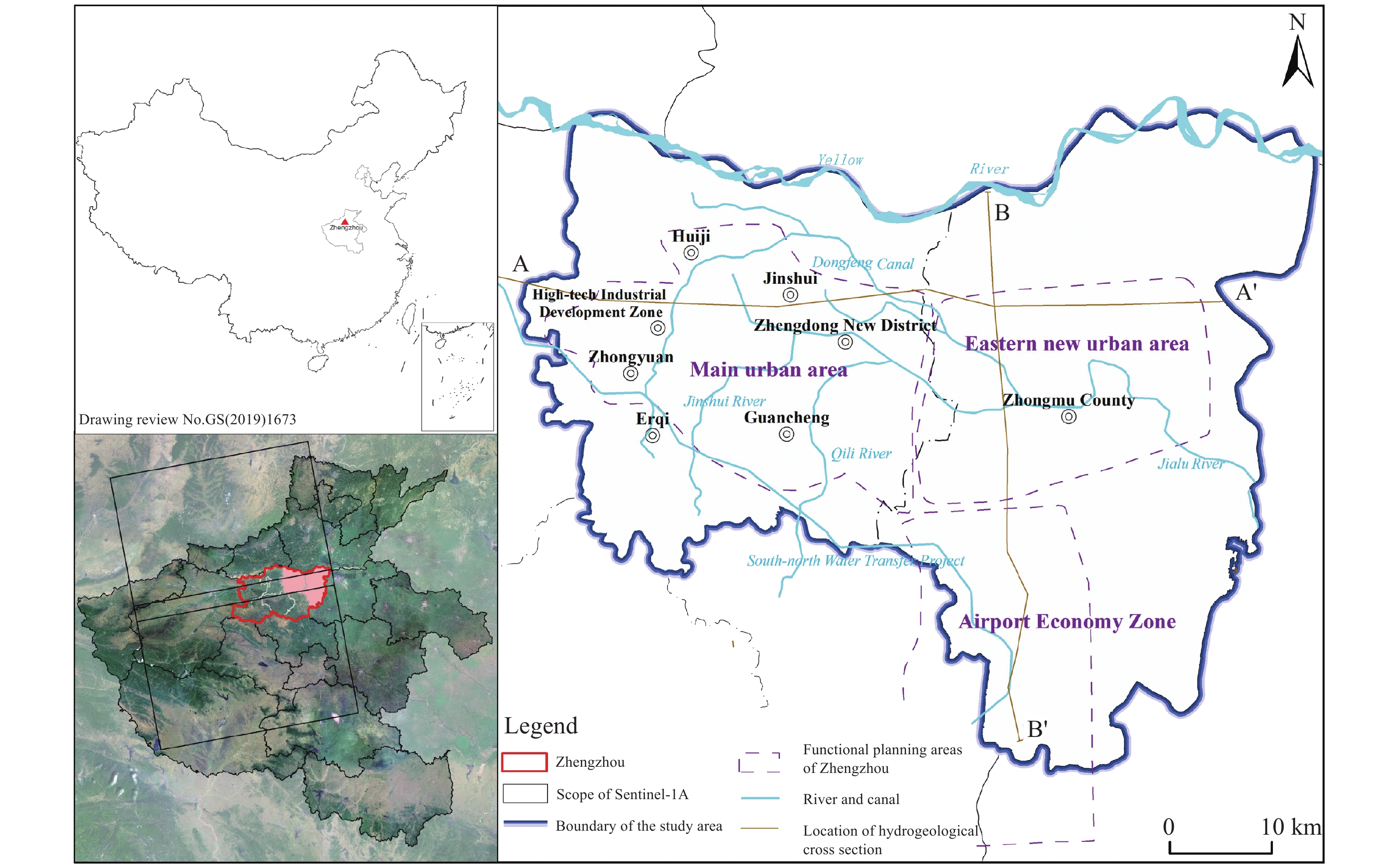

 DownLoad:
DownLoad:

